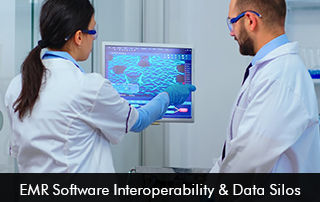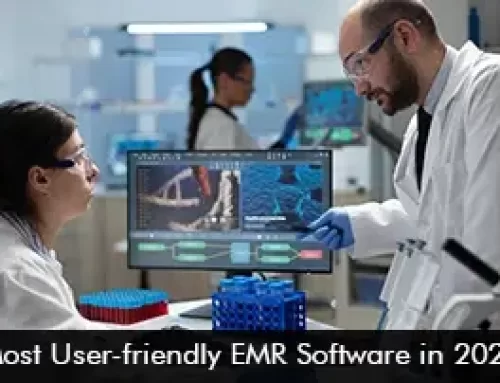Despite widespread adoption of EMR software, many healthcare providers continue to face significant challenges related to interoperability and data silos.
Interoperability refers to the ability of different EMR systems to communicate and share patient data seamlessly. In contrast, data silos occur when critical health information becomes trapped within isolated systems, inaccessible to other providers. These barriers can lead to fragmented care, increased costs, and compromised patient outcomes. This blog explores the root causes of these challenges, their impact on healthcare delivery, and actionable strategies to foster better data integration across systems.
Understanding EMR Software and Its Role in Healthcare
EMR Software serves as the backbone of digital healthcare, enabling providers to maintain comprehensive, accurate, and up-to-date patient records. Unlike traditional paper charts, EMRs offer advanced functionalities such as automated alerts, e-prescribing, and clinical decision support, all of which contribute to more efficient and effective patient care.
One of the most significant advantages of EMR Software is its ability to consolidate patient data into a single, easily accessible platform. Physicians can review medical histories, lab results, and treatment plans in real-time, reducing the risk of errors and improving diagnostic accuracy. Additionally, EMRs facilitate better care coordination among specialists, ensuring that all providers involved in a patient’s treatment have access to the same information.
Despite these benefits, many healthcare organizations struggle with interoperability limitations. When EMR systems cannot exchange data efficiently, critical patient information may be delayed, duplicated, or even lost, leading to inefficiencies that undermine the very purpose of digital record-keeping.
The Critical Challenge of EMR Software Interoperability
Interoperability in healthcare is not merely a technical issue—it is a fundamental requirement for delivering high-quality, patient-centered care. When EMR systems from different vendors or institutions cannot communicate effectively, healthcare providers face unnecessary obstacles in accessing and sharing vital patient data.
The Importance of Seamless Data Exchange
A fully interoperable EMR ecosystem ensures that patient records follow the individual across different care settings, whether they are visiting a primary care physician, a specialist, or an emergency room. This continuity eliminates redundant tests, reduces medical errors, and enhances the overall efficiency of healthcare delivery. For example, if a patient’s allergy information is accurately shared between systems, providers can avoid prescribing medications that could trigger adverse reactions.
Key Barriers to Achieving EMR Software Interoperability
Several factors contribute to the persistent interoperability challenges in EMR Software. One major obstacle is the prevalence of proprietary systems that use closed architectures, making it difficult for external systems to integrate with them. Additionally, the lack of universal data standards means that different EMR platforms may store and transmit information in incompatible formats.
Privacy and security concerns also play a significant role. Healthcare organizations must comply with strict regulations such as HIPAA (Health Insurance Portability and Accountability Act) in the U.S., which can complicate data-sharing efforts. Finally, the financial and logistical burden of upgrading legacy systems to support modern interoperability standards often deters institutions from making necessary changes.
The Persistent Problem of Data Silos in Healthcare
Data silos occur when patient information is confined within a specific EMR system or department, preventing other authorized providers from accessing it. This fragmentation can have serious consequences, including delayed diagnoses, increased healthcare costs, and diminished patient satisfaction.
How Data Silos Impact EMR Software and Patient Care
Consider a scenario where a patient visits an outpatient clinic and later requires emergency care at a hospital. If the hospital’s EMR system cannot retrieve records from the clinic, physicians may lack crucial information about the patient’s medical history, current medications, or recent test results. This gap can lead to unnecessary repeat tests, medication errors, or even misdiagnoses.
Root Causes of Data Silos
The primary cause of data silos is the lack of integration between disparate EMR systems. Many healthcare organizations use multiple software solutions that do not communicate with one another, forcing staff to manually transfer data, a time-consuming and error-prone process. Additionally, some institutions resist data sharing due to competitive concerns or fears about data breaches, further exacerbating the problem.
Legacy systems that lack modern application programming interfaces (APIs) also contribute to data silos. These older systems were not designed with interoperability in mind, making it difficult to connect them with newer, more advanced platforms.
Strategies to Enhance EMR Software Interoperability and Eliminate Data Silos
Addressing interoperability and data silo challenges requires a multi-faceted approach involving technology, policy, and collaboration among stakeholders. Below are key strategies that healthcare organizations can implement to improve data exchange.
1. Adoption of Universal Data Standards
Standardized data formats, such as FHIR (Fast Healthcare Interoperability Resources) and HL7 (Health Level Seven International), play a crucial role in enabling seamless communication between different EMR systems. FHIR, in particular, has gained traction due to its use of modern API technology, which allows for real-time data exchange. By adopting these standards, healthcare providers can ensure that patient records are consistently structured and easily transferable across platforms.
2. Leveraging Health Information Exchanges (HIEs)
Health Information Exchanges (HIEs) serve as centralized platforms where healthcare organizations can securely share patient data. Initiatives like CommonWell Health Alliance and Carequality have made significant strides in connecting disparate EMR systems, allowing providers to access comprehensive patient records regardless of the software they use. Participation in regional and national HIEs can significantly reduce data silos and improve care coordination.
3. Encouraging EMR Software Vendor Accountability and Collaboration
EMR vendors must prioritize interoperability by designing systems with open APIs and supporting industry-wide data-sharing initiatives. Policymakers can also play a role by enforcing regulations that mandate interoperability compliance, such as the 21st Century Cures Act, which prohibits information blocking and promotes patient access to health data.
4. Transitioning to Cloud-Based EMR Software Solutions
Cloud-based EMR systems offer greater flexibility and scalability compared to traditional on-premise solutions. Platforms like Cerner Millennium enable seamless integration with other healthcare applications, reducing dependency on outdated legacy systems. The cloud also facilitates automatic updates, ensuring that systems remain compliant with evolving interoperability standards.
5. Empowering Patients with Access to Their Health Data
Giving patients control over their medical records can help bridge gaps in interoperability. Patient portals and mobile health apps, such as Apple Health Records and MyChart, allow individuals to aggregate their health information from multiple providers and share it as needed. This patient-centric approach not only enhances transparency but also reduces the risk of incomplete or inaccurate records.
The Future of EMR Software: Trends Shaping Interoperability
As technology continues to evolve, several emerging trends are poised to further enhance EMR interoperability and reduce data silos in healthcare.
Artificial Intelligence and Machine Learning
AI-powered EMR systems can analyze vast amounts of patient data to identify patterns, predict health risks, and recommend personalized treatment plans. Natural Language Processing (NLP) technologies can also extract valuable insights from unstructured clinical notes, making data more actionable across different platforms.
Blockchain for Secure and Transparent Data Exchange
Blockchain technology offers a decentralized and tamper-proof method for sharing medical records. By creating an immutable ledger of patient data transactions, blockchain can enhance security while ensuring that authorized providers have real-time access to accurate information.
Regulatory Advancements Promoting Interoperability
Governments worldwide are increasingly recognizing the importance of interoperability in healthcare. Regulations such as the EU’s General Data Protection Regulation (GDPR) and the U.S. ONC’s (Office of the National Coordinator for Health IT) interoperability rules are pushing healthcare organizations to adopt standardized data-sharing practices.
The widespread adoption of EMR Software has undeniably transformed healthcare delivery, but persistent challenges related to interoperability and data silos continue to hinder its full potential. Fragmented systems lead to inefficiencies, increased costs, and, most critically, compromised patient care.
To overcome these barriers, healthcare organizations must prioritize the adoption of universal data standards, leverage Health Information Exchanges, and collaborate with EMR vendors to ensure seamless integration. Additionally, embracing cloud-based solutions, AI-driven analytics, and patient-centered data access can further enhance interoperability.
The future of healthcare depends on breaking down data silos and fostering a connected ecosystem where patient information flows freely and securely. By addressing these challenges head-on, the industry can unlock the true promise of digital health—improved outcomes, reduced costs, and a better experience for both providers and patients.







